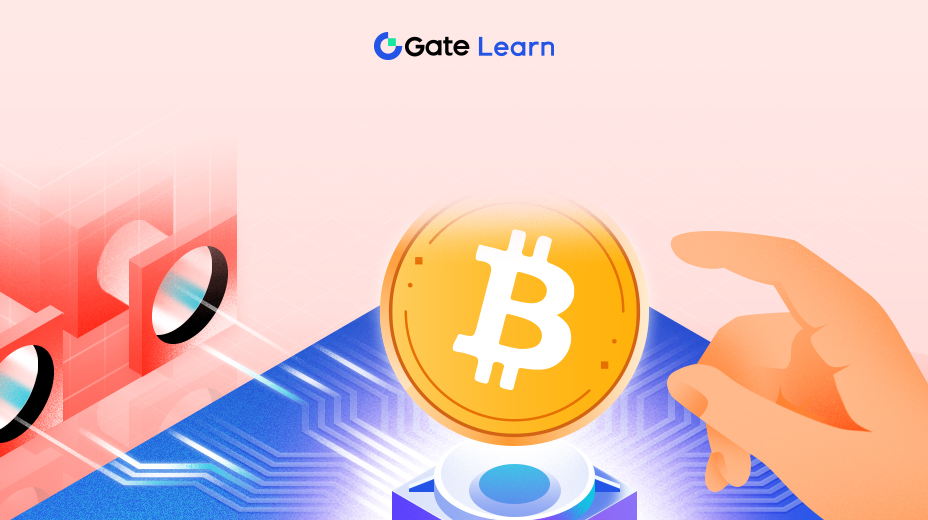DeFiプラットフォームのセキュリティ
このモジュールは、やり取りするDeFiプラットフォームのセキュリティ面を理解することに専念しています。 信頼できるDeFiプラットフォームを特定し、DeFiの中央集権化に関連するリスクを分析し、情報に基づいた選択をするためにノンカストディアルプラットフォームとカストディアルプラットフォームを区別する方法について説明します。
信頼できるDeFiプラットフォームの特定
DeFiプラットフォームは、ブロックチェーンネットワーク上に構築された分散型アプリケーション(dApps)であり、貸し出し、借入、取引、イールドファーミングなどのさまざまな金融サービスを提供します。 DeFiはエキサイティングな機会を提供する一方で、従来の仲介者や規制当局による監視の欠如によるリスクも伴います。 信頼できるDeFiプラットフォームを特定することは、これらのリスクを管理するための重要な第一歩です。
調査とデューデリジェンス
チームと開発: プロジェクトのチームと開発コミュニティを調査します。 チームメンバーのアイデンティティや経歴に関する透明性は、ポジティブな兆候です。 アクティブで評判の良い開発者は、多くの場合、プロジェクトの信頼性に貢献します。
監査とコード: スマートコントラクトの監査を探します。 評判の良いDeFiプラットフォームは、脆弱性を特定するために第三者のセキュリティ監査を受けています。 これらの監査レポートにアクセスし、その完全性を評価します。
コミュニティとソーシャルプルーフ: RedditやTelegramなどのフォーラムでプロジェクトのコミュニティと交流しましょう。 肯定的なレビュー、活発な議論、協力的なコミュニティは、信頼性を示すことができます。
流動性と取引量:プラットフォームの流動性と取引量を分析します。 流動性と取引活動が高いプラットフォームは、一般的に信頼性が高いと考えられています。
パートナーシップと統合:プラットフォームが他の評判の良いプロジェクトとのパートナーシップまたは統合を形成しているかどうかを確認します。 コラボレーションは信頼性を高めることができます。
セキュリティ機能
ノンカストディアル:DeFiプラットフォームはノンカストディアル、つまりユーザーの資金を保有しないものでなければなりません。 ユーザーは自分の資産を管理し、カウンターパーティリスクを軽減します。
スマートコントラクトのセキュリティ:プラットフォームのスマートコントラクトのセキュリティを評価します。 厳格なスマートコントラクトのテストと監査を優先するプロジェクトを探してください。
保険:一部のDeFiプラットフォームでは、スマートコントラクトの脆弱性やハッキングが発生した場合に保険や補償を提供しています。 プラットフォームがこの追加の保護レイヤーを提供するかどうかを調べます。
アップグレード可能性とガバナンス: プラットフォームのガバナンス モデルを評価します。 適切に設計されたガバナンスシステムは、誤用を防ぎながら、必要なアップグレードを可能にする必要があります。
危険信号と警告サイン
匿名チーム: 匿名チームによるプロジェクトには注意が必要です。 開発チームの身元に関する透明性は、重要な信頼要因です。
非現実的な約束:最小限のリスクで高いリターンを保証するプラットフォームには注意してください。 話がうますぎるように聞こえるかもしれませんが、おそらくそうでしょう。
透明性の欠如:運用やセキュリティ対策に関する明確で包括的な情報を提供しないプラットフォームは、より高いリスクをもたらす可能性があります。
コミュニティの関与が限られている: コミュニティの関与と議論が最小限に抑えられているプロジェクトは、信頼性に欠ける可能性があります。
最近の立ち上げ: 新しく立ち上げられたプロジェクトは実績がないため、リスクの高い投資になる可能性があります。
すべての資産を1つに集中させるのではなく、複数のDeFiプラットフォームに投資を分散します。 少額の投資から始めることで、より多額の資金を投入する前に、経験を積み、プラットフォームの信頼性を評価することができます。
DeFiスペースの最新の開発とニュースを常に最新の状態に保ちます。 DeFiフォーラムに参加し、評判の良い暗号通貨のニュースソースをフォローして、潜在的なセキュリティ問題や関与しているプロジェクトの変更について最新情報を入手してください。
DeFiにおける中央集権化のリスク
中央集権化と分散化
DeFiの中核となるのは、オープンで分散型の金融システムを構築することであり、銀行や金融機関などの従来の仲介者の必要性を排除します。 しかし、DeFiエコシステムの一部の要素は、少数のエンティティや個人の手に制御や影響力が集中する中央集権化を示す可能性があります。
DeFiにおける中央集権化の主なリスク
スマートコントラクトの所有権:一部のDeFiプロジェクトでは、スマートコントラクトの所有権と管理は、単一のエンティティまたは小さなグループにある場合があります。 この制御の集中化は、制御エンティティの侵害がエコシステム全体に影響を与える可能性があるため、脆弱性につながる可能性があります。
オラクルの集中化:オラクルは、スマートコントラクトに外部データを提供するために不可欠です。 中央集権的なオラクルは、操作されたり、単一障害点になったりする可能性があるため、リスクをもたらす可能性があります。
ガバナンスコントロール:DeFiガバナンストークンは、多くの場合、保有者に議決権とプロトコルの方向性に対するコントロールを付与します。 小さなグループや団体がこれらのトークンのかなりの部分を蓄積している場合、プロトコルのガバナンスに不釣り合いな影響を与える可能性があります。
流動性の集中:一部のDeFiプラットフォームでは、限られた数のユーザーやマーケットメーカーからの流動性が集中している場合があります。 これは、市場操作のリスクとフラッシュクラッシュに対する脆弱性の増大につながる可能性があります。
規制リスク:規制当局による監視は、DeFi内の中央集権的な要素に影響を与え、法的な異議申し立て、資産の差し押さえ、または特定のサービスの強制停止につながる可能性があります。
中央集権化リスクの軽減
分散化:複数のプラットフォームやプロトコルにDeFi活動を分散させ、中央集権化の単一ポイントへのエクスポージャーを減らします。
コミュニティガバナンス:幅広いコミュニティが関与する分散型ガバナンスを優先するプラットフォームに参加します。 これにより、意思決定の分散と透明性を確保することができます。
分散型オラクル:データ操作のリスクを軽減するために、分散型オラクルまたは複数のオラクルを使用するDeFiプロジェクトを選択します。
透明性のある所有権:関与するプロジェクトのスマートコントラクトの所有権と管理を検証します。 スマートコントラクトの所有権をオープンに開示するプロジェクトは、より高い透明性を提供することができます。
法規制の遵守:管轄区域の規制状況について常に情報を入手し、DeFiでの活動が適用法に準拠していることを確認します。
DeFiは急速に進化する分野であり、新たなリスクや中央集権化の傾向が出現する可能性があります。 DeFiコミュニティに積極的に参加し、業界ニュースをフォローし、継続的なデューデリジェンスを実施することで、最新情報を入手してください。
ノンカストディアル・プラットフォームとカストディアル・プラットフォーム
ノンカストディアルプラットフォーム
ノンカストディアルDeFiプラットフォームは、分散化の原則を中核に設計されています。 彼らは、ユーザーが自分の資産の管理を維持し、第三者に資金を保管させることなく、スマートコントラクトと直接対話できるようにすることで、DeFiの基本的な精神を遵守しています。 ここでは、ノンカストディアル・プラットフォームの主な特徴をご紹介します。
ユーザーコントロール:ノンカストディアルプラットフォームは、ユーザーが自分の秘密鍵と資産を完全に制御できるようにします。 ユーザーは、自分のウォレットと秘密鍵を保護する責任があります。
トラストレス:これらのプラットフォームはトラストレスな方法で運営されているため、ユーザーは中央機関や仲介者を信頼する必要はありません。 彼らは、取引を容易にするためにスマートコントラクトとブロックチェーン技術に依存しています。
セキュリティ:ノンカストディアルプラットフォームは、第三者がユーザーの資金を誤って処理したり、不正に流用したりするリスクを排除するため、より安全であると見なされることがよくあります。
分散化:これらのプラットフォームは、仲介者なしでピアツーピアの相互作用を可能にすることにより、金融システムの分散化に貢献します。
カストディアルプラットフォーム
一方、カストディアルDeFiプラットフォームは、DeFiの基本原則からある程度逸脱しています。 カストディアルプラットフォームでは、ユーザーは自分の資産を、これらの資産を保管するサードパーティのサービスまたはプラットフォームに預けます。 カストディアルプラットフォームの主な特徴は次のとおりです。
第三者カストディ:カストディアルプラットフォームは、ユーザーの資金を保有・管理するために、中央集権的な事業体やサービスに依存しています。 ユーザーは、自分の秘密キーを直接制御できない場合があります。
利便性:カストディアルプラットフォームは、多くの場合、利便性とユーザーフレンドリーなエクスペリエンスを提供します。 ユーザーは秘密鍵を管理したり、ウォレットのセキュリティについて心配したりする必要がない場合があります。
カウンターパーティリスク:カストディアルプラットフォームのユーザーは、カストディアンが資産を保護し、取引を正しく実行することを信頼する必要があるため、カウンターパーティリスクにさらされています。
中央集権化:カストディアルプラットフォームは、ユーザー資産の管理を単一のエンティティまたはサービスに依存しているため、中央集権化を導入しており、DeFiの分散型精神と相反する可能性があります。
ノンカストディアルプラットフォームとカストディアルプラットフォームの選択
ノンカストディアルプラットフォームとカストディアルプラットフォームのどちらを選択するかは、個人の好み、リスク許容度、ユースケースによって異なります。
- ノンカストディアルプラットフォームは、コントロール、セキュリティ、トラストレスなインタラクションを優先するユーザーに最適です。 これらは、自分のウォレットと秘密鍵の管理に慣れている経験豊富なユーザーに適しています。
- カストディアルプラットフォームは、利便性とユーザーフレンドリーなエクスペリエンスを重視するユーザーに好まれる可能性がありますが、注意してアプローチする必要があります。 ユーザーは、カストディアンが責任を持って資産を処理することを信頼する必要があります。
選択したプラットフォームの種類に関係なく、セキュリティは常に最優先事項であるべきです。 非カストディアルプラットフォームのユーザーは秘密鍵を熱心に保護する必要がありますが、カストディアルプラットフォームのユーザーはカストディアンの評判とセキュリティ対策を調査する必要があります。
ハイライト
- DeFiプラットフォームは、さまざまな金融サービスを提供しています。 信頼できるプラットフォームを特定し、リスクを理解することが不可欠です。
- プラットフォームの信頼性を評価するための調査チーム、監査、コミュニティエンゲージメント、およびセキュリティ機能。 匿名のチームや非現実的な約束などの危険信号に注意してください。
- DeFi内の中央集権化は、脆弱性や課題をもたらす可能性があります。 リスクには、スマートコントラクト管理、オラクルの集中化、ガバナンスの集中、流動性の問題、規制上の懸念などがあります。
- 投資を多様化し、分散型ガバナンスに参加し、分散型オラクルを備えたプラットフォームを選択します。 規制の動向に関する最新情報を入手してください。
- ノンカストディアルプラットフォームは、ユーザーコントロール、トラストレス、セキュリティを優先します。 カストディアル・プラットフォームは利便性を提供しますが、カウンターパーティ・リスクと中央集権化をもたらします。
- 選択は、個人の好みとリスク許容度によって異なります。 セキュリティは、どちらのタイプのプラットフォームでも常に最優先事項です。





